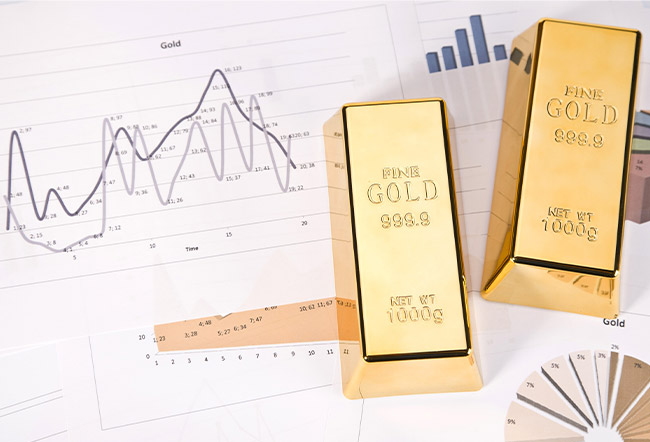
Understanding the London Bullion Market Association Benchmark
Gold has captivated humanity for centuries, prized for its beauty, rarity, and enduring value. But have you ever wondered how gold prices are determined? In this blog post, we will delve into the concept of the gold price fix, focusing on the London Bullion Market Association's (LBMA) benchmark. By exploring the significance of this benchmark, the intricacies of its calculation methods, and its profound impact on the global gold bullion market.
What is the Gold Price Fix?
The gold price fix, also known as the LBMA Gold Price or the London fix, is a crucial benchmark regulated by the UK's Financial Conduct Authority (FCA) and established by the LBMA. As the owner of the gold price fix, the LBMA entrusts the operations to the ICE Benchmark Administration (IBA). The IBA's responsibility is to ensure the integrity of the gold price fix, ensuring that it accurately reflects the underlying market interest for gold and complies with all relevant regulations.
The Auction Process and Calculation
The determination of gold prices involves an intricate auction process that occurs twice a day. The auction brings together the five members of the London Gold Pool, who participate in a conference call to reach a consensus on the gold price. The first auction, known as the "London am fix" or "London morning fix," takes place at 10:30 am UK time. The second auction, the "London pm fix" or "London afternoon fix," is conducted at 3:00 pm UK time. During these auctions, the participating members exchange relevant market information and negotiate until a consensus is reached on the gold price fix, quoted in US Dollars for that particular day.
The Use of the Afternoon Gold Price Fix
In the absence of closing gold prices due to the 24-hour nature of the market, the afternoon gold price fix is often used as an indicator of the day's closing price. Market participants rely on this as a reference point to assess the value of gold and make informed decisions based on prevailing market conditions. This is an important benchmark for the global gold bullion market, representing a consensus of prices attained during the daily auction. This price is determined by the five members of the London Gold Pool, who communicate with one another at 3:00 pm UK time.
During this auction, traders exchange information about current market conditions and negotiate until a consensus is reached on the gold price fix for the day. As a result, the afternoon gold price fix is an invaluable tool for those seeking to make informed decisions in the gold bullion market. With this benchmark, traders can accurately assess the value of gold at any given time, allowing them to make smart investments and capitalise on profitable opportunities.
The gold price fix has been instrumental in facilitating the growth of the global gold bullion market, and its accuracy and integrity are maintained by the FCA and LBMA. The consortium of five members that constitute the London Gold Pool ensures that the benchmark appropriately reflects prevailing market conditions, allowing traders to make informed decisions about their investments. As such, the gold price fix has become an indispensable tool in the world of gold trading.
Currency and Unit of Measurement
The IBA also provides the gold prices in a wide range of currencies, based on the US Dollar fix price, catering to the diverse global nature of the gold market and reflecting global currency conversion rates against the Dollar. These currencies include Australian Dollars, British Pounds, Canadian Dollars, Euros, Onshore and Offshore Yuan, Indian Rupees, Japanese Yen, Malaysian Ringgit, Russian Roubles, Singapore Dollars, South African Rand, Swiss Francs, New Taiwan Dollars, Thai Baht, and Turkish Lira. This comprehensive coverage enables market participants from various countries to access the gold price fix in their preferred currency, facilitating global gold transactions.
The standard unit of measurement for gold is the troy ounce. The gold price fix is typically quoted per troy ounce. Derived from the French town of Troyes where it was first used during the Middle Ages, the troy ounce weighs slightly more than the avoirdupois ounce commonly used for everyday items. One troy ounce is equivalent to approximately 31.1 grams.
A Historical Perspective
Throughout history, the gold fix price has played a significant role in the global economy and financial systems. Understanding the historical significance of the gold fix price provides valuable insights into the evolution of gold pricing mechanisms and their impact on the global market.
Origins of the Gold Price Fix
The gold fix price has its roots in the 19th century, with the establishment of the London Gold Market. Initially, a single gold fix was conducted each day, but over time, the need for two daily fixes arose to accommodate the growing demand and trading volumes.
Role in the Gold Standard Era
During the era of the Gold Standard, when currencies were backed by gold, the gold fix price held immense importance. It served as a reference point for central banks to determine the value of their currencies in relation to gold. Countries would adjust their exchange rates based on the gold fix price to maintain the stability of their currencies.
Transition to a Floating Exchange Rate System
With the decline of the Gold Standard and the transition to a floating exchange rate system in the early 1970s, the role of the gold fix price evolved. Instead of directly pegging currencies to gold, the gold fix price became a benchmark for gold pricing in financial markets.
Adaptation to Modern Financial Systems
In recent decades, advancements in technology and the globalisation of financial markets have transformed the way the gold fix price is determined and disseminated. The introduction of electronic trading platforms and the involvement of the LBMA and IBA have enhanced transparency, efficiency, and accessibility in the gold market.
Criticisms and Reforms
The gold fix price mechanism has not been without criticism. In the past, concerns were raised regarding the potential for manipulation and lack of transparency in the fixing process. In response, regulatory authorities implemented reforms to enhance the integrity and governance of the gold fix price determination, reinforcing its role as a trusted benchmark. Understanding the historical context of the gold fix price provides a deeper appreciation for its significance in the evolution of financial systems and the global gold market. It highlights the adaptability of the gold fix price mechanism to changing economic landscapes and the continuous efforts to ensure transparency and reliability in gold pricing.
Importance and Impact of the Gold Price Fix
The gold price fix holds significant importance in the global gold market, serving as a widely accepted benchmark. Its transparency, consistency, and credibility contribute to its role as a reference point for gold transactions, investments, and market analysis. Various market participants rely on the gold price fix to determine fair market value and make informed decisions.
The gold price fix influences gold bullion pricing, as it provides a baseline for establishing the prices of gold bars and coins. Investors often consider the gold price fix when making investment decisions, as gold is frequently sought after as a hedge against inflation and market volatility. Additionally, jewellery manufacturers utilise the gold price fix as a pricing baseline for their products. Fluctuations in the gold price fix can impact jewellery prices, influencing consumer demand and sales.
Furthermore, central banks, which hold substantial gold reserves, consider the gold price fix when managing their reserves and formulating monetary policies. Changes in the gold price fix can influence central banks' decisions to buy or sell gold, thereby impacting their currency reserves and overall economic strategies.
Understanding the gold price fix is crucial for comprehending the dynamics of the precious metal market. This empowers market participants to make informed decisions, contributes to fair market value, and plays a significant role in gold transactions and investments.
Gold Price Charts: Tracking the Fluctuations of the Gold Spot Price
In addition to understanding the gold fix price, investors and market participants often rely on a gold price chart to monitor the fluctuations of the gold price. A gold price chart visually represents the historical performance of the gold spot price over a specific period, providing valuable insights into price trends, patterns and the gold price today.
Gold spot price refers to the current market price at which gold can be bought or sold for immediate delivery. It represents the prevailing value of gold in real-time and is influenced by various factors such as global economic conditions, geopolitical events, supply and demand dynamics, and investor sentiment. The live gold price chart is highly responsive to market forces and serves as a key indicator of the overall health of the gold market.
By utilising a gold price chart, investors and traders can analyse historical price movements, identify trends, and make informed decisions about buying or selling gold bars or gold coins. These charts can be customised to display different timeframes, ranging from intraday to long-term historical data. Some charts may also include technical indicators and overlays, such as moving averages or trend lines, to assist in technical analysis.
To access these charts, numerous financial websites and platforms provide real-time and historical data. These charts can be accessed online, offering users the ability to customise the display options based on their preferences. Traders and investors can utilise these charts to conduct technical analysis, assess support and resistance levels, and identify potential entry or exit points for their gold-related investments.
It's important to note that while these charts provide valuable insights, they should be used as a tool for analysis and not as a definitive predictor of future price movements. The gold market is influenced by numerous complex factors, and price fluctuations can be unpredictable. Therefore, it is advisable to combine chart analysis with thorough research and understanding of the broader economic and market conditions.
By staying informed about the gold price through charts, investors can make more informed decisions and better navigate the dynamic market. In addition to understanding the gold fix price, monitoring the price through gold price charts is a valuable practice for investors and traders. These charts provide historical data and visual representations of the gold spot price, allowing market participants to analyse trends, identify patterns, and make informed decisions.
However, it's important to remember that gold price charts should be used as a tool for analysis and should be complemented with a comprehensive understanding of the broader economic and market factors influencing the gold market.
The Gold Bullion Co. publishes the live gold price chart. We use the gold price fix as a bench to allow us to remain competitive when pricing our huge range of gold bullion bars and coins.
















